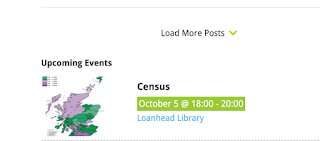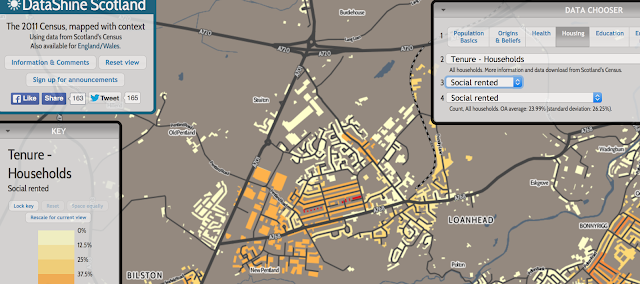A workshop was run in the Loanhead Library to help the locals to interrogate the Census website to find out key stats about the area.
The workshop covered
- use of the Census Data Explorer to get key facts for the Loanhead area
- use of DataShine Scotland to draw thematic maps
- exploring the UK parliamentary constituency profile for Midlothian
- checking out the latest fashions in baby names!
The following are some key links used along with some illustrations of what the results looked like
Standard outputs
-> select the locality of Loanhead
-> Get Data will display a list of topics
-> Choose the tenure tab under the household topic and repeat for both years
2011
2001
-> Try DataShine Scotland to illustrate
Patterns of people aged 16 and over who are single
Patterns of social rented households
Overviews of constituencies are summarised using graphs
Baby Names
Finally we looked at the population NRS publication on Baby Names,with its associated visualisation.
The Midlothian Science Festival aims are:
- To run enjoyable science activities in Midlothian appealing to a large, diverse audience of all ages and backgrounds, from professionals to novices, from science enthusiasts to the merely curious.
- To provide a non-threatening entry point for local people from a varied demographic area (including rural and deprived areas) to engage with science.
- To provide role models for careers in the form of festival staff, volunteers and presenters who work in STEM in the local area.
- To showcase current and historical science originating within Midlothian.
- To demonstrate Midlothian’s contribution and importance to science and technology at a global level and to broaden the horizons of future generations of scientists.













